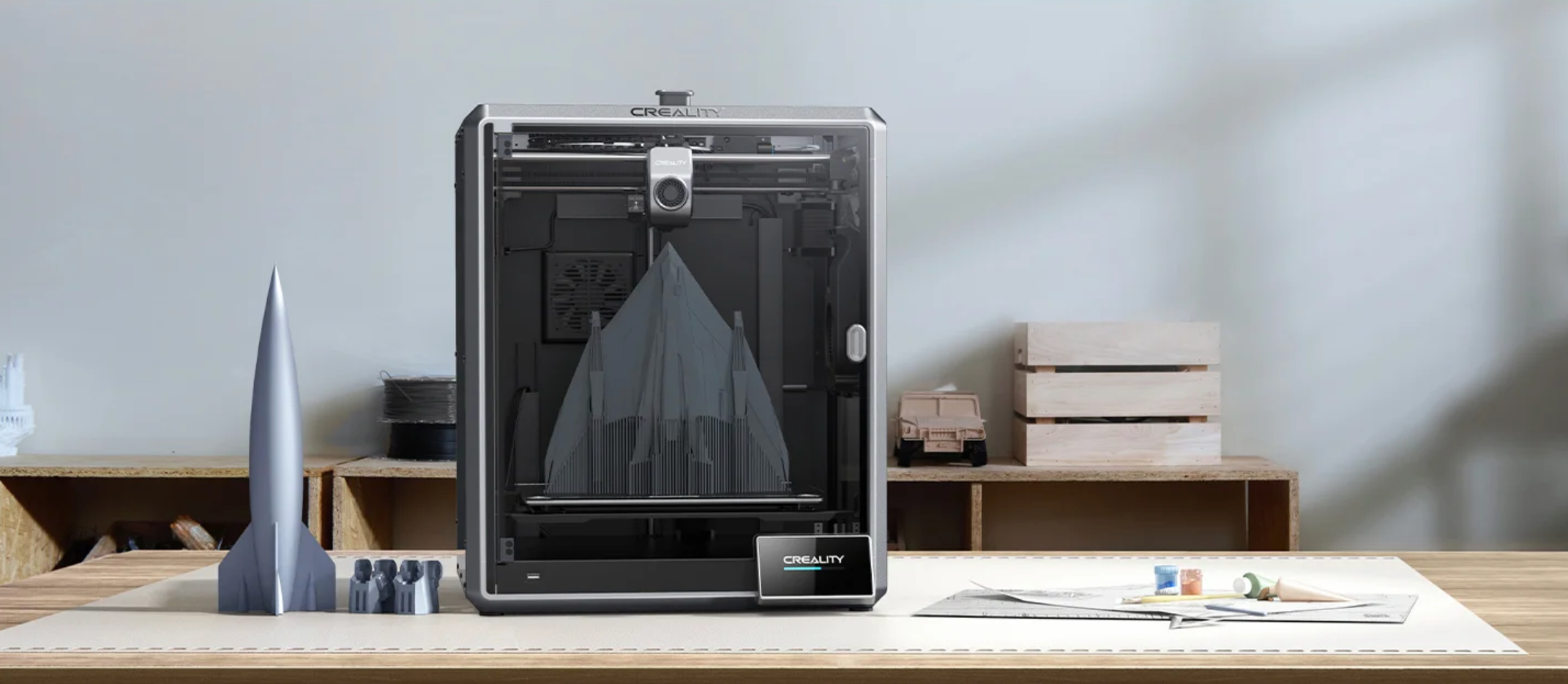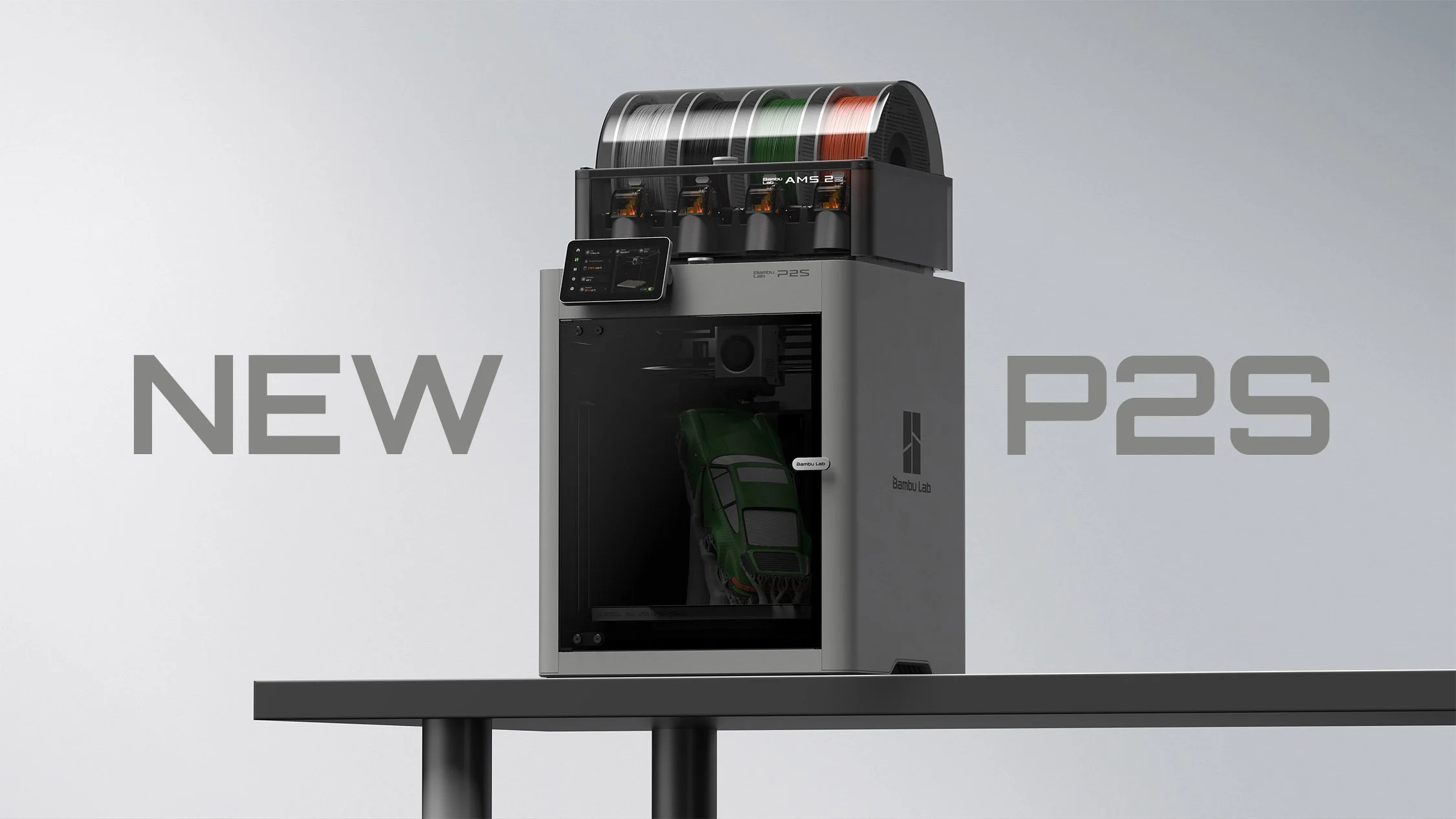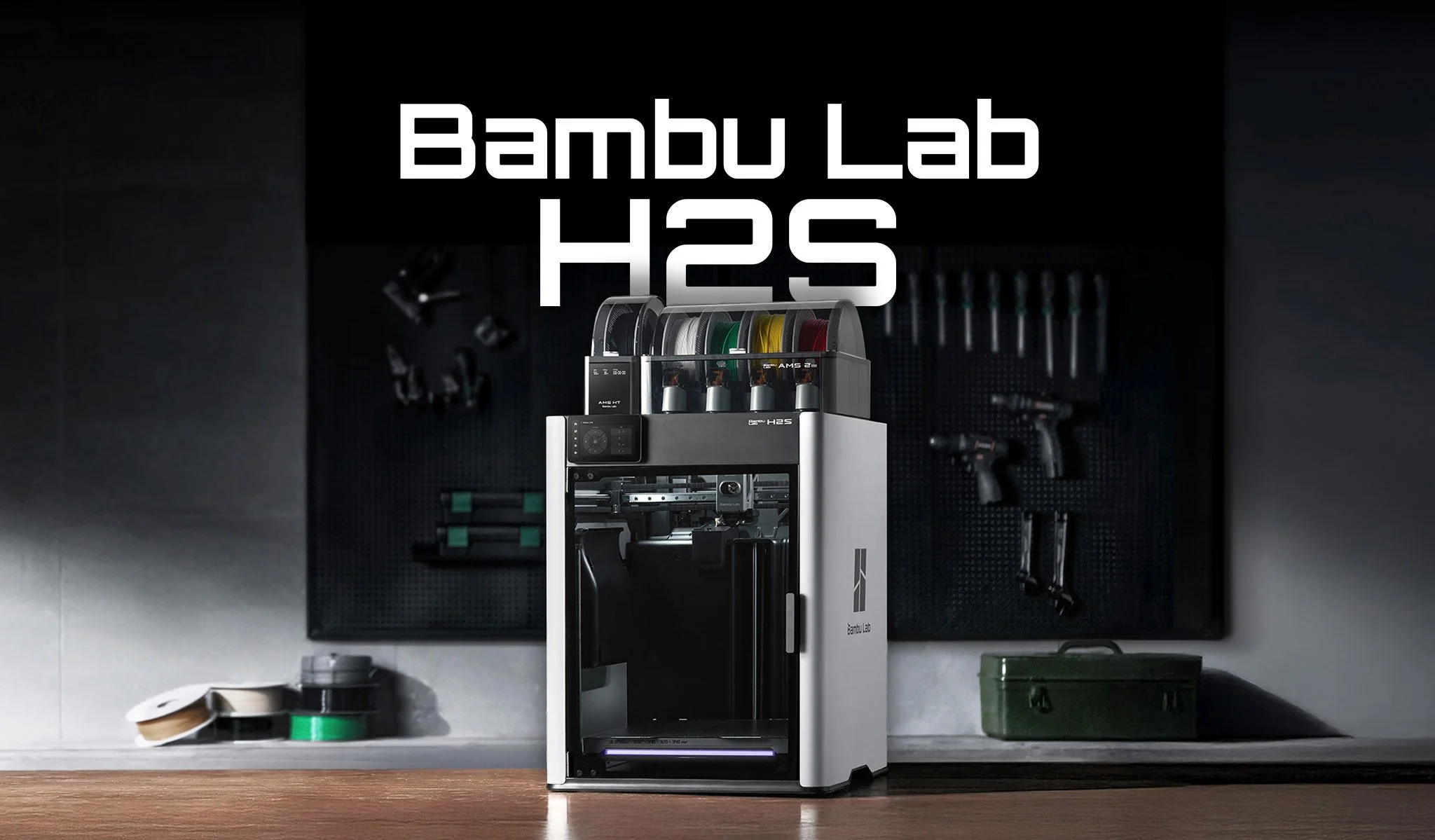Bambu Lab vs Creality K2
While Bambu Lab have teased releasing a “bigger 3D Printer” Creality has already launched the K2 with multi color.
Bambu Lab are currently the ones to beat on consumer and prosumer 3D printing market. Creality have launched their own Core XY printers such as K1 and K1C to try and keep up with the huge success of Bambu Lab.
Their new Creality K2 tries to hit on the same level as the Bambu Lab Printers, including Multi-material stations, but at a larger build volume. Let’s talk about that!
Bambu Lab - The one to beat
Bambu Lab offer 3 series of printers spread over 2 sizes. The X-series are the best*, while P-series is a great balanced product for budget/features and the A-series is the budget option.
*best technically, while the P1 or A1 is most value for the money for most.
Within the A1 series, you also find A1 Mini which is the only “other” size of Bambu Lab 3D Printer, which is smaller wit a build volume of 180x180x180mm, when the rest have 256x256x256mm.
This 254mm cubed is starting to become a limit for a lot of the users otherwise happy with bambu labs ecosystem and machines. The only real competitor with multi material has been the Prusa XL, which caters to a different price and customer group.
So when Creality releases a new K2 3D Printer with a whopping 350x350x350 build volume on a Core XY design, with a CMS (Creality Material station) similar to AMS from Bambu Lab, we get excited!
Creality K2 3D Printer
The new Creality K2 3D Printer not only shines on large build volume. It does so in a fairly competitive package with expected features like active heated chamber(!), Closed-loop motor control, up to 600mm/s printing (travel) and direct drive extrusion.
Until recently, Bambu Lab have been the only ones with an AMS system, but with the K2 and anycubics Kobra 3, there are now more options on the market.
With that said, none are as proven and reliable as the Bambu lab option so we should approach with some caution.
Creality are known to be a bit fast on releasing products, so we expect there to be development and updates coming in both software and hardware on the CMS.
The Creality K2 with CMS bundle has an MSRP of $1499 which is quite competitive if you think about the build size and features.
What is against the K2?
Currently, the Bambu Lab A1 and P1S are fantastic options for getting into 3D Printing with prices of $849 (P1S combo) and $559 (A1 combo, currently discounted to $489).
Both of these offers an incredible printing experience with multi color material, but they limit you to 256x256x256mm printing volume.
When Size Matters
We know that Bambu Lab will release something bigger, but we don’t know if it’s going to be competitive on price, or something catering “only” to the top-segment like the Bambu Lab X1E does.
So therefor if you need larger 3D printing in an easy-to-use system (sure, not as integrated as Bambu Lab) the Creality K2 is your best bet right now, until we know if bambu Lab comes with a larger A1 (like an A1 XL) or something more premium.
The Prusa XL does offer a large size packed with functionality, but at a staggering $4500 if you want it assembled, enclosed and with 5 tool heads.
Here’s some of my thoughts on any new Bambu Lab 3D Printer and rumors, but really anything large from BL.
Which one should you get
Since we don’t know what Bambu Lab are releasing that’s bigger, it’s difficult to do a perfect comparison, but I would suspect it is going to be quite expensive.
With that said, Creality have had less reliable track record, even if it seems like they are bettering themselves.
I would recommend to check out the Creality K2 if you need the big volume with multiple colors and need it fast. Bambu Lab haven’t even released their machine, so we’re unsure about delivery times, price and formfactor.
I would recommend the P1S over the Bambu Lab A1 in this case, as it has enclose to help succeed with challenging larger prints using other materials than PLA.
Creality K2 Plus vs Bambu Lab P1S Specifications compared
Since these two 3D Printers are the options I would leave you with, here are their specifications compared.
Creality K2 Plus 3D Printer specifications
Build Volume: 350x350x350mm Enclosed
Max Print Speed: 600mm/s
Max acceleration: 30 000mm/s2
Max flow: Missing info
Typical Print speed: 2-300mm/s
Extruder: (1) Dual-Gear Direct Drive
Nozzle temperature(max): 350°C
Nozzle diameter: 0.4mm (0.6/0.8 available for swap)
Filament diameter: 1.75mm
Heated plate: Yes - up to 120°C
Chamber Temperature: Up to 60°C actively heated.
Auxiliary cooling: Yes
Build Plate: Removable and flexible
Auto levelling: Yes, hands-free
Display: 4.3” Color Touch Screen
AI Camera: Yes, Calibration, Monitoring and timelapse
Filament Runout Sensor: Yes
Air purifier: Yes
Input shaping: Yes
Power Loss recovery: Yes
File format: Gcode
Slicer: Creality Print 5.0
Connectivity: Wifi, Ethernet, USB
Bambu lab P1S 3D Printer specifications
Build Volume: 256x256x256mm Enclosed
Max Print Speed: 500mm/s
Max acceleration: 20 000mm/s2
Max flow: 32mm3/s
Default speed: 250mm/s
Extruder: (1) Direct Drive, dual gear all metal hotend.
Nozzle temperature(max): 300°C
Nozzle diameter: 0.4mm (0.2,/0.6/0.8 + hardened)
Filament diameter: 1.75mm
Heated plate: Yes - up to 100°C
Auxiliary cooling: Yes
Build Plate: Removable and flexible Dual-sided PEI
Auto levelling: Yes, hands-free
Display: 2.7” 192x64px screen (no touch)
Camera: Yes, 720p timelapse and monitoring
Filament Runout Sensor: Yes
Air purifier: Yes - Activated Carbon
Input shaping: Yes
Power Loss recovery: Yes
File format: 3mf (supports g-code)
Slicer: Bambu Studio, partially compatible with SuperSlicer, Cura, PrusaSlicer
Connectivity: Wifi, Bluetooth, Bambu-Bus + MicroSD card
3D Printing blog latest posts








